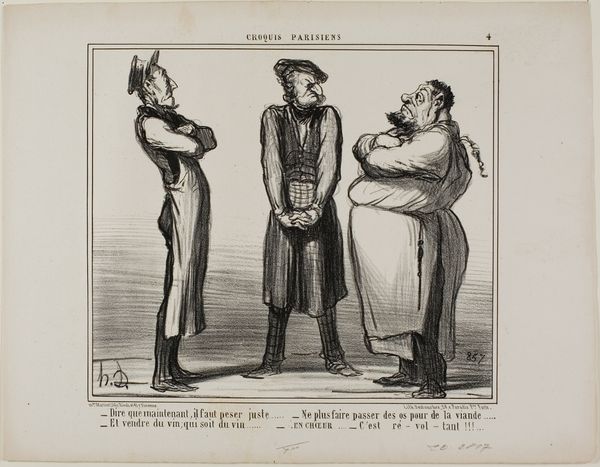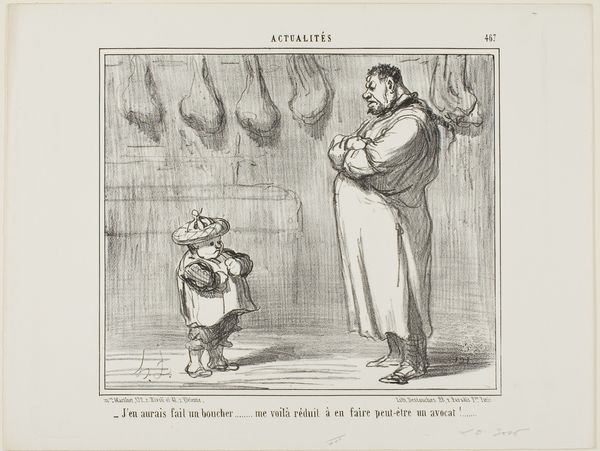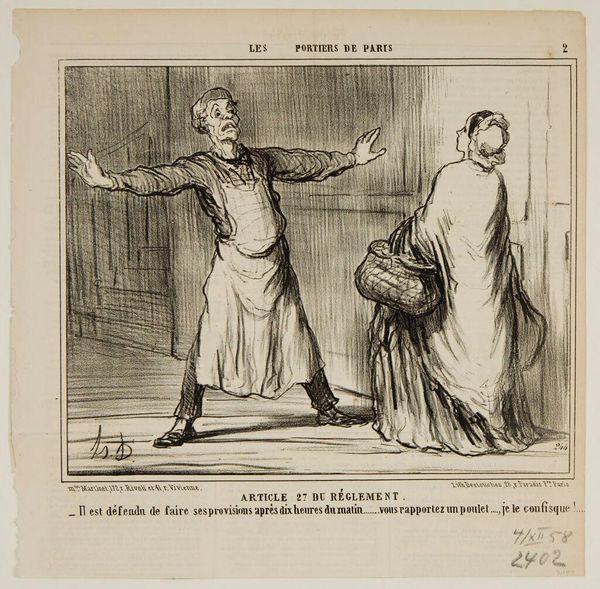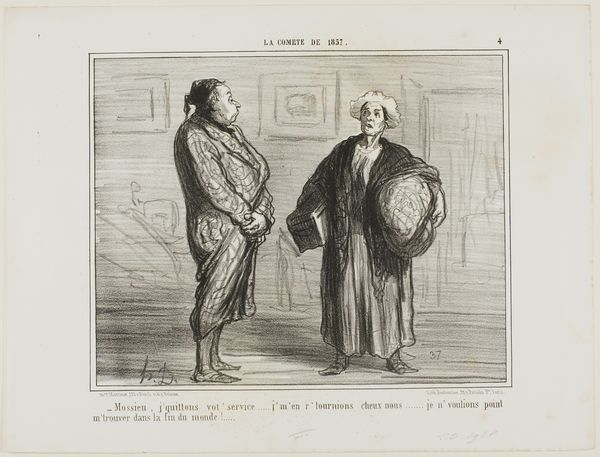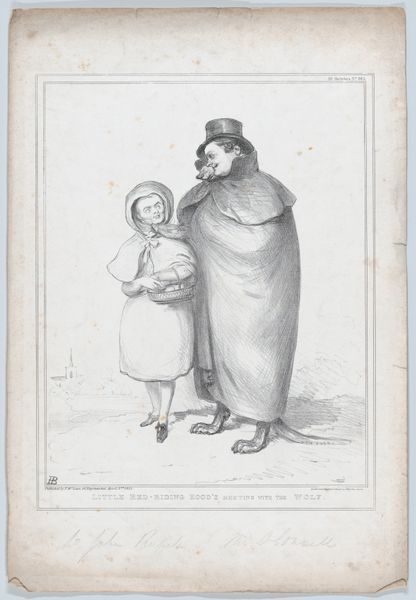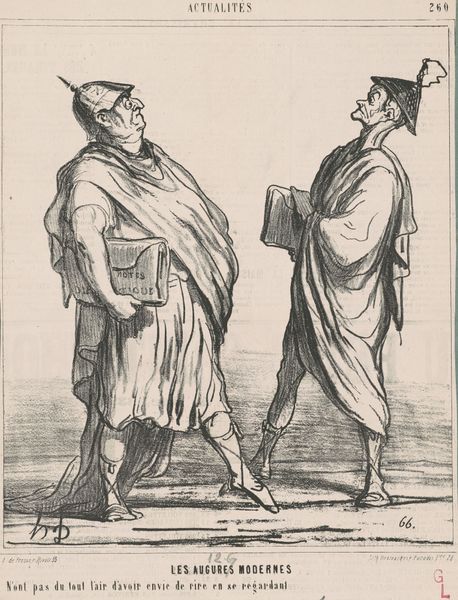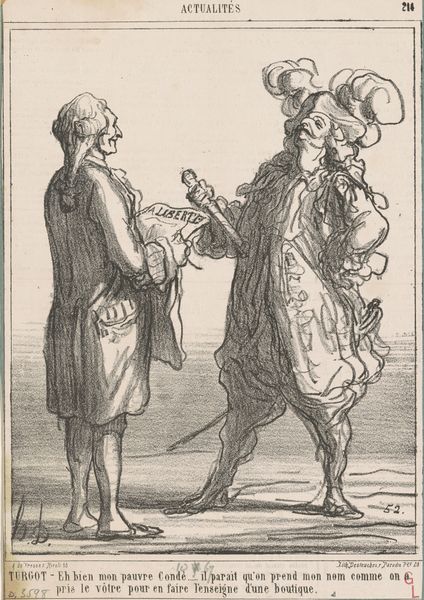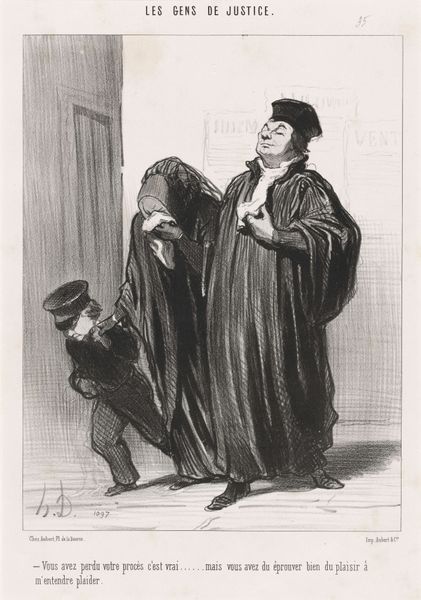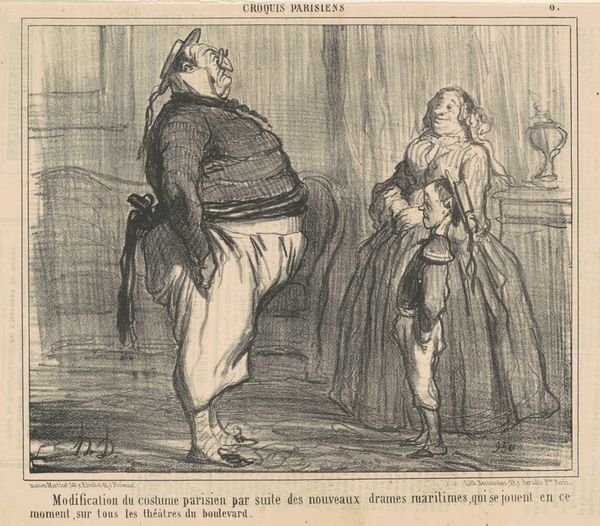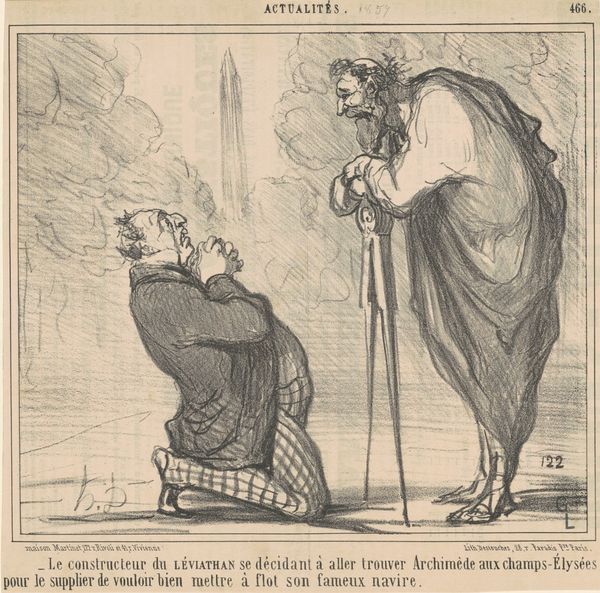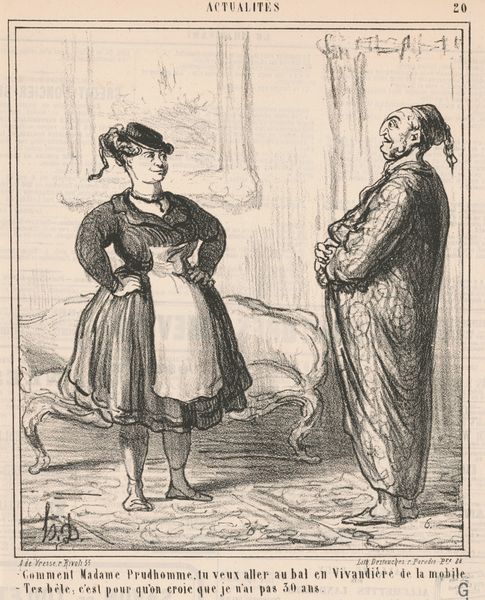
“- Mister butcher, I wish you a happy and healthy New Year… - What? This is going to be a nice one, this 1858… every grocer around the corner will be able to sell my mutton!…,” plate 481 from Actualités 1858
0:00
0:00
Dimensions: 220 × 255 mm (image); 276 × 359 mm (sheet)
Copyright: Public Domain
Editor: This lithograph by Honoré Daumier, created in 1858, is titled “- Mister butcher, I wish you a happy and healthy New Year… - What? This is going to be a nice one, this 1858… every grocer around the corner will be able to sell my mutton!…,” part of his Actualités series. It’s stark, with heavy lines, and clearly a commentary on something, but what exactly do you see in this piece? Curator: I see a brutal commentary on the shifts in the means of production and consumption during the industrial revolution. Look at the butcher, his physical bulk, the tools of his trade – the cleaver and meat. Daumier presents him as almost a monument to traditional labor, now threatened. The grocer's ability to sell mutton disrupts established market hierarchies and the butcher’s singular role in meat provision. It’s about the changing accessibility and distribution of goods, driven by emerging capitalism. Editor: So it's not just about a grumpy butcher, but about the anxieties surrounding industrialization? Curator: Precisely. The lithograph as a medium itself speaks to mass production, contrasting the hand-rendered quality of the image with its potential for widespread dissemination. This tension mirrors the larger societal shift from artisanal production to mass-produced goods. Editor: That’s a great point. I hadn’t considered the lithograph itself as part of the message, as a material object reflecting those economic tensions. Curator: Exactly. And consider the consumption angle: now that every grocer sells it, what does that do to the perceived quality or value of the meat, the butcher's labor, and the traditional system? What is gained and lost when production is democratized? Editor: So the artwork allows us to investigate the social and economic impacts of that historical shift by paying attention to its materials and the depicted characters within this setting. Thank you for making that clear. Curator: Indeed. Considering the artwork this way allows us to challenge any romantic view and examine art as something deeply rooted in the material conditions of its making and its era.
Comments
No comments
Be the first to comment and join the conversation on the ultimate creative platform.

